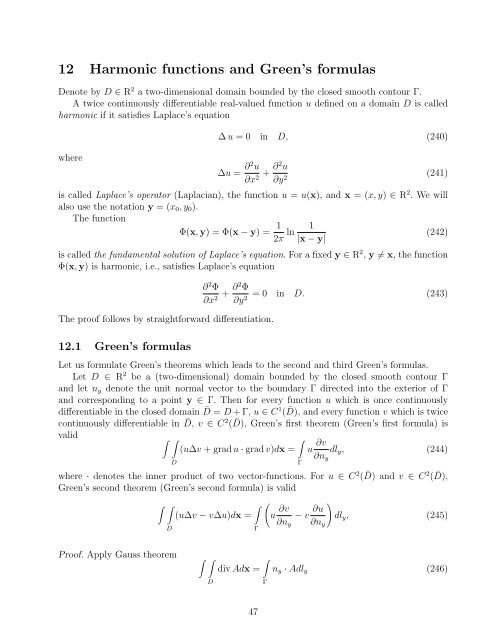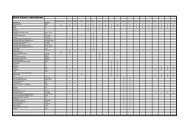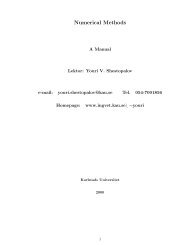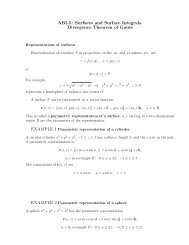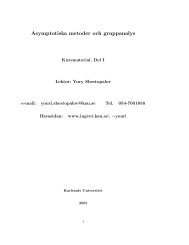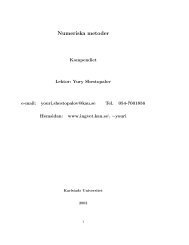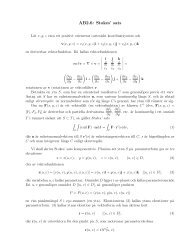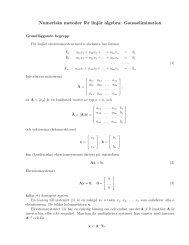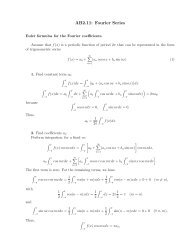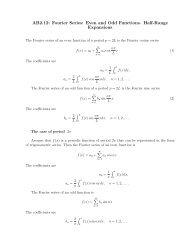You also want an ePaper? Increase the reach of your titles
YUMPU automatically turns print PDFs into web optimized ePapers that Google loves.
12 Harmonic functions and Green’s formulasDenote by D ∈ R 2 a two-dimensional domain bounded by the closed smooth contour Γ.A twice continuously differentiable real-valued function u defined on a domain D is calledharmonic if it satisfies Laplace’s equationwhere∆ u = 0 in D, (240)∆u = ∂2 u∂x 2 + ∂2 u∂y 2 (241)is called Laplace’s operator (Laplacian), the function u = u(x), and x = (x, y) ∈ R 2 . We willalso use the notation y = (x 0 , y 0 ).The functionΦ(x, y) = Φ(x − y) = 12π ln 1(242)|x − y|is called the fundamental solution of Laplace’s equation. For a fixed y ∈ R 2 , y ≠ x, the functionΦ(x, y) is harmonic, i.e., satisfies Laplace’s equationThe proof follows by straightforward differentiation.12.1 Green’s formulas∂ 2 Φ∂x + ∂2 Φ= 0 in D. (243)2 ∂y2 Let us formulate Green’s theorems which leads to the second and third Green’s formulas.Let D ∈ R 2 be a (two-dimensional) domain bounded by the closed smooth contour Γand let n y denote the unit normal vector to the boundary Γ directed into the exterior of Γand corresponding to a point y ∈ Γ. Then for every function u which is once continuouslydifferentiable in the closed domain ¯D = D + Γ, u ∈ C 1 ( ¯D), and every function v which is twicecontinuously differentiable in ¯D, v ∈ C 2 ( ¯D), Green’s first theorem (Green’s first formula) isvalid∫ ∫∫(u∆v + grad u · grad v)dx = u ∂v dl y , (244)∂n yDwhere · denotes the inner product of two vector-functions. For u ∈ C 2 ( ¯D) and v ∈ C 2 ( ¯D),Green’s second theorem (Green’s second formula) is validΓ∫ ∫∫ ((u∆v − v∆u)dx = u ∂v − v ∂u )dl y , (245)∂n y ∂n yDΓProof. Apply Gauss theorem∫ ∫∫div Adx =n y · Adl y (246)DΓ47


